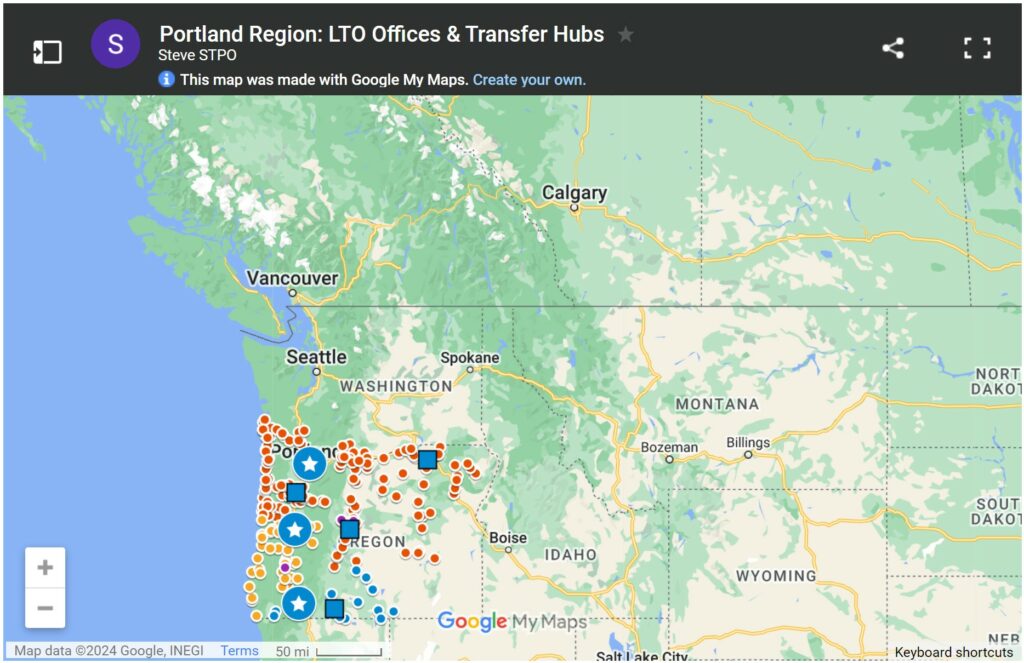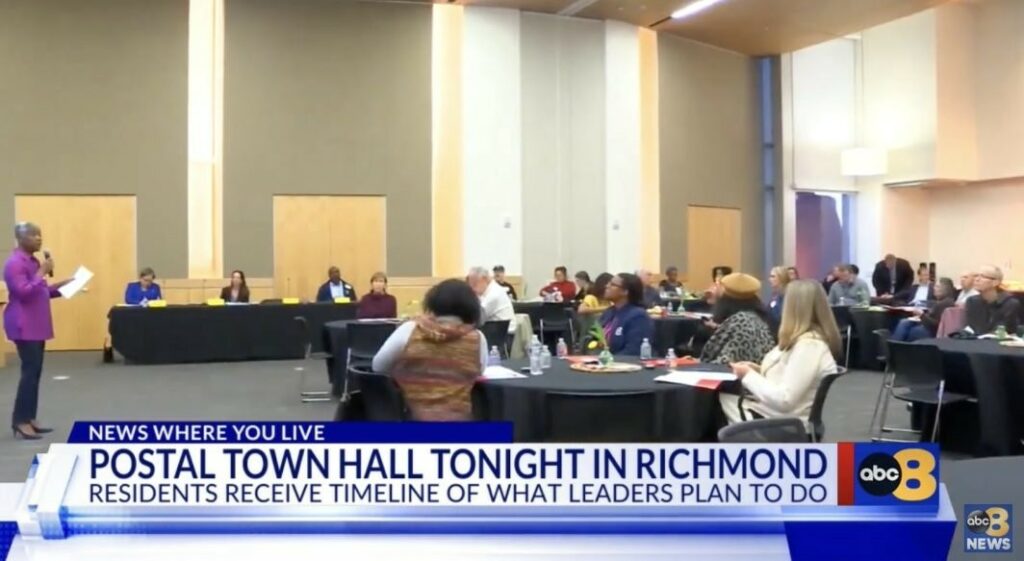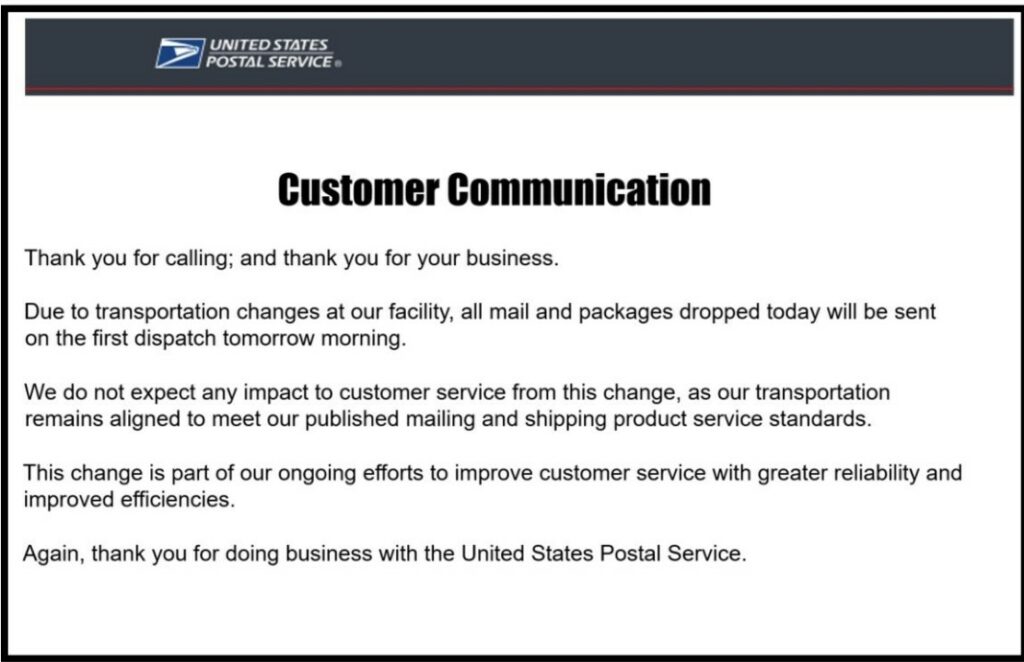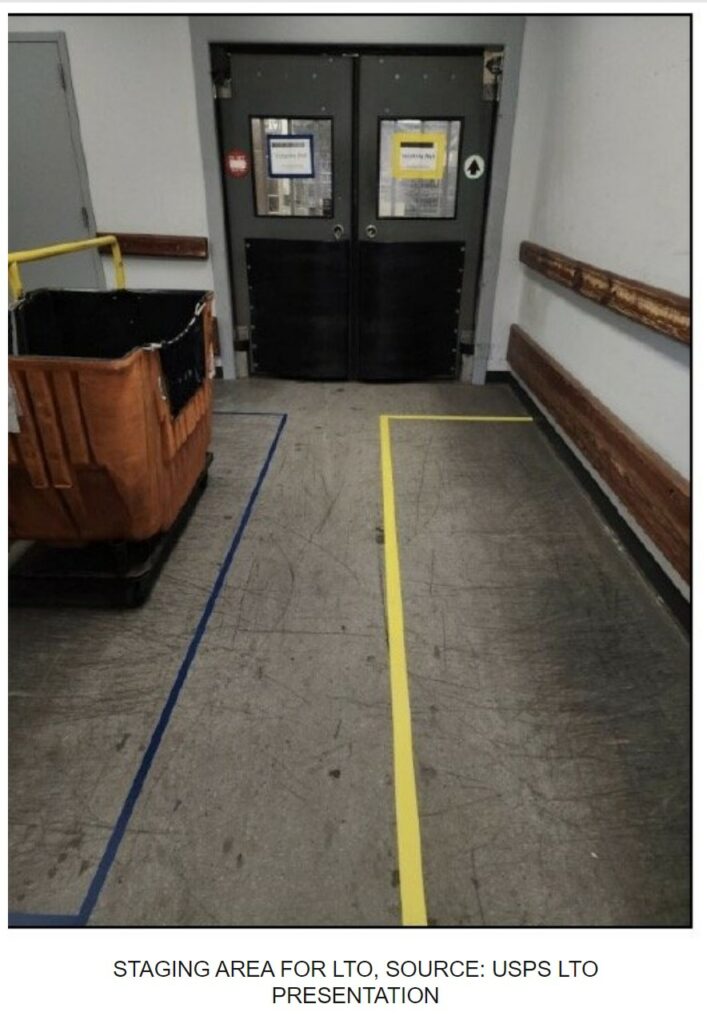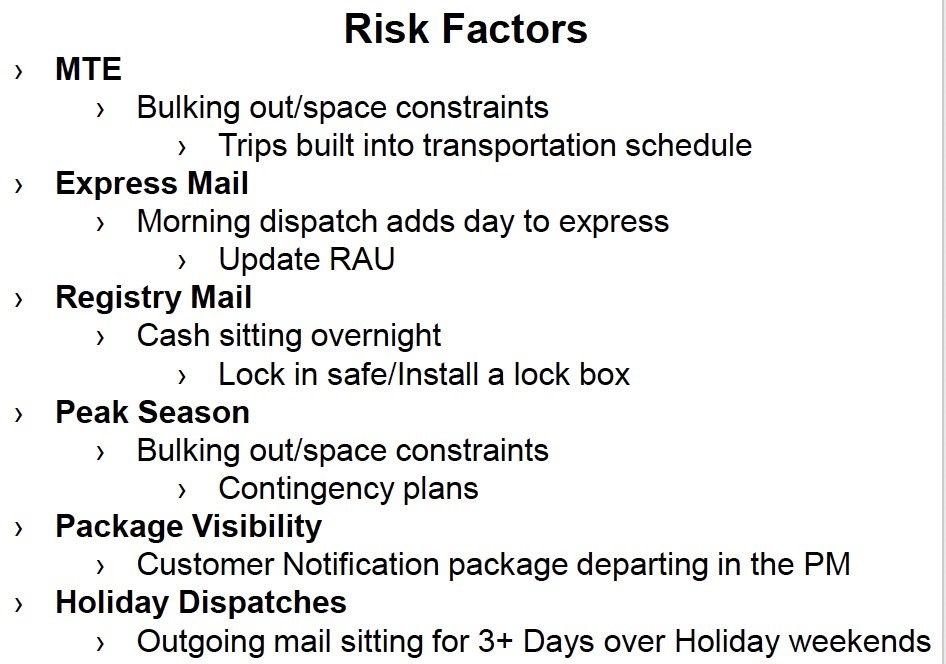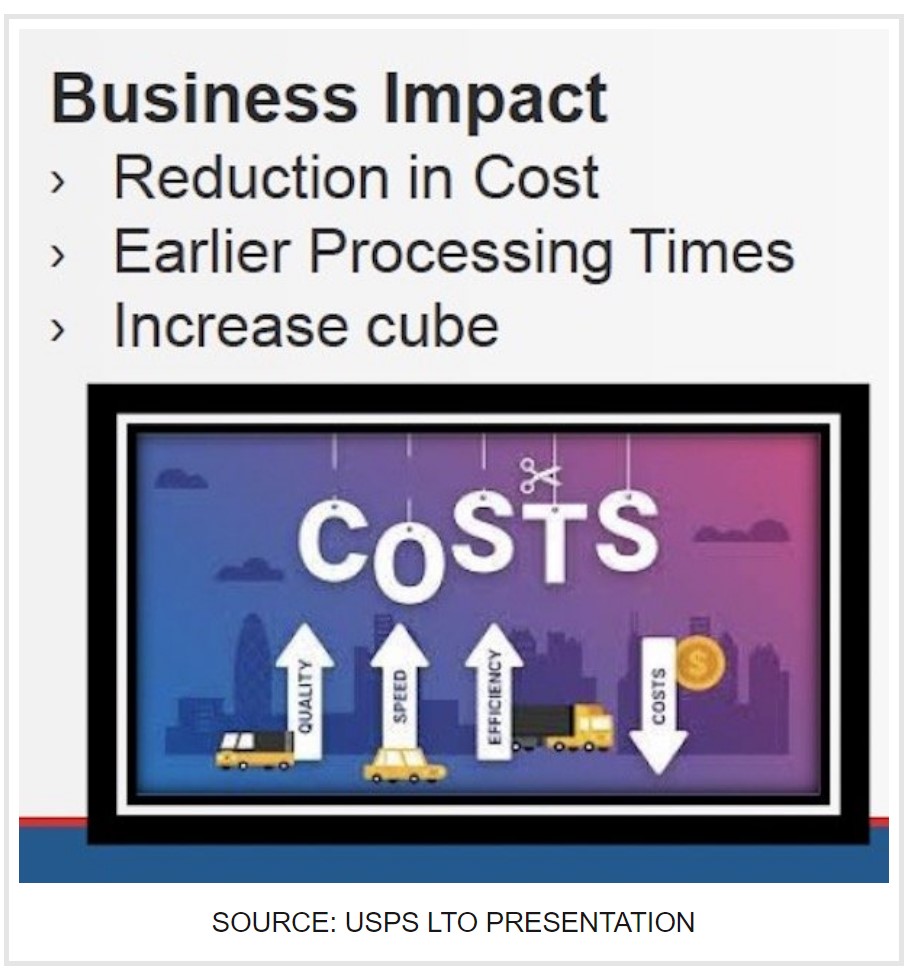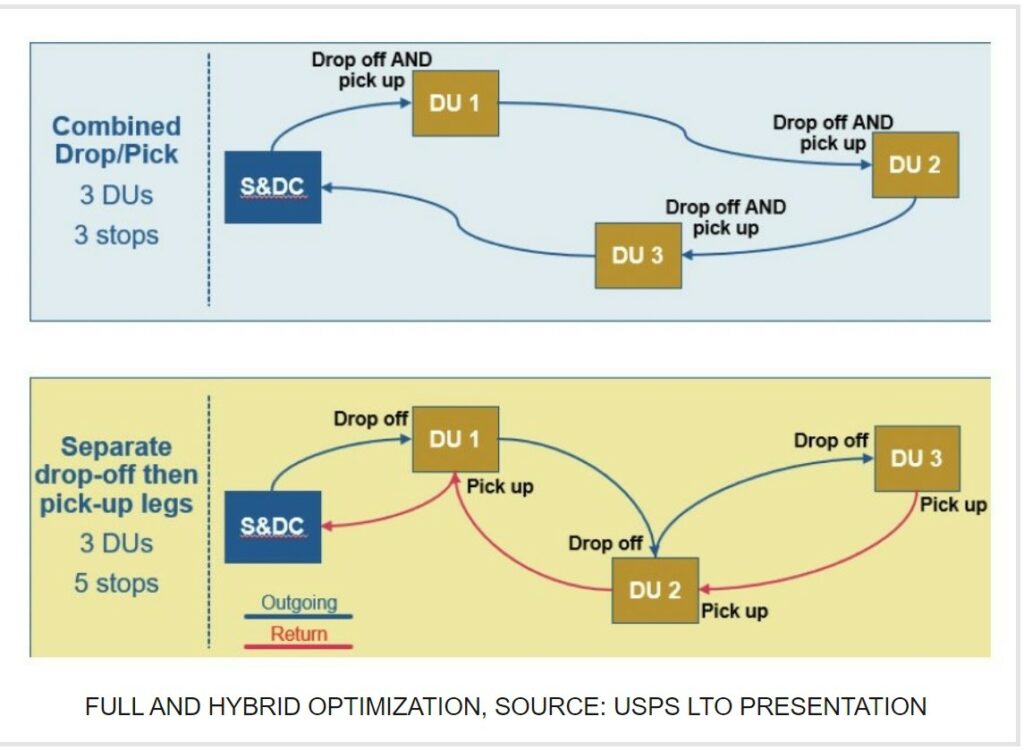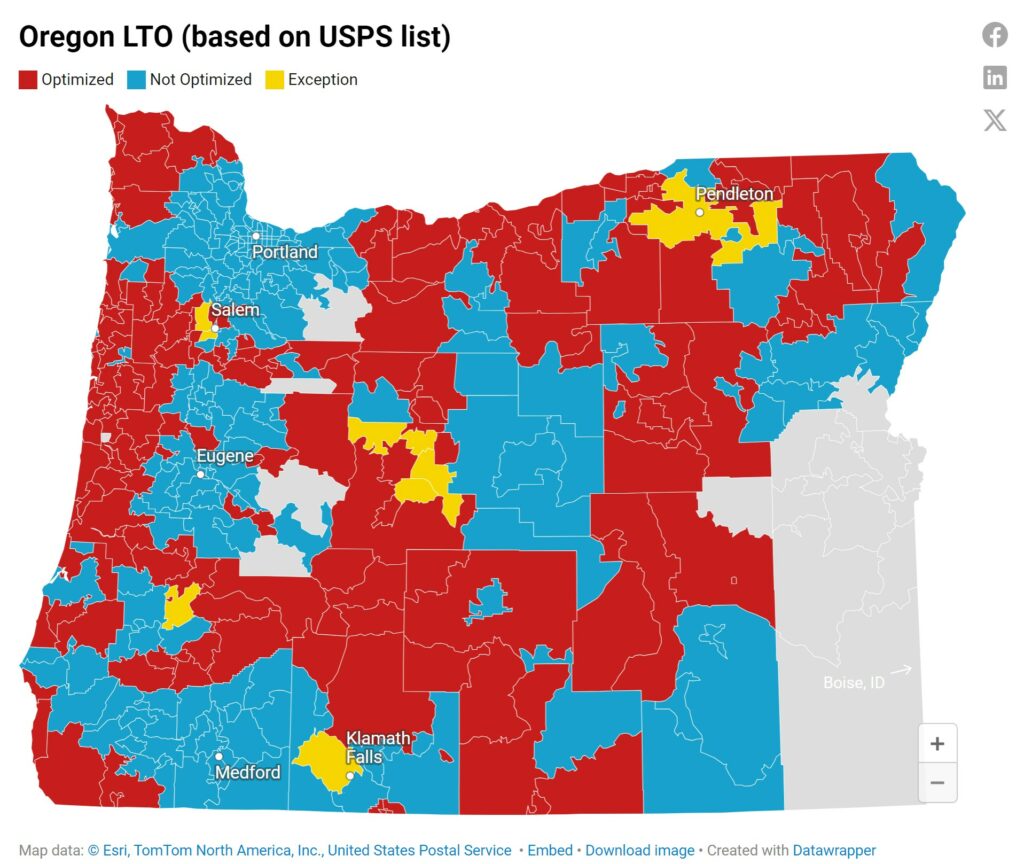I have noticed Angry Bear picks up many readers when it features commentary by Steve Hutkins from “Save The Post Office.” Steve Hutkins, Mark Jamison, Save The Post Office and I go back a number of years. We would like to hear from USPS workers. Use an anonymous name if you are concerned about repercussions. I hope we win this battle. Evening collections end in Oregon and Washington: The threat to election mail and other risks Save the Post Office, Steve Hutkins Last week the Postal Service stopped collecting mail and packages at the end of the day at 170 post offices in Oregon and 30 in southern Washington. The initiative is called Local Transportation Optimization (LTO), aka Optimized Collections. Without the traditional end-of-day
Topics:
Angry Bear considers the following as important: 2024 election, Hot Topics, law, politics, Save The Post Office, Steve Hutkins
This could be interesting, too:
Robert Skidelsky writes Lord Skidelsky to ask His Majesty’s Government what is their policy with regard to the Ukraine war following the new policy of the government of the United States of America.
NewDealdemocrat writes JOLTS revisions from Yesterday’s Report
Joel Eissenberg writes No Invading Allies Act
Ken Melvin writes A Developed Taste
I have noticed Angry Bear picks up many readers when it features commentary by Steve Hutkins from “Save The Post Office.” Steve Hutkins, Mark Jamison, Save The Post Office and I go back a number of years. We would like to hear from USPS workers. Use an anonymous name if you are concerned about repercussions. I hope we win this battle.
Evening collections end in Oregon and Washington: The threat to election mail and other risks
Save the Post Office, Steve Hutkins
Last week the Postal Service stopped collecting mail and packages at the end of the day at 170 post offices in Oregon and 30 in southern Washington.
The initiative is called Local Transportation Optimization (LTO), aka Optimized Collections. Without the traditional end-of-day collection and transport to the processing center, the mail sits overnight at the post office, waiting to be picked up the next morning, when the day’s mail is dropped off for carrier delivery and PO box distribution.
A presentation about LTO was shared recently with employees at the impacted post offices in Oregon and Washington. The presentation says that as of mid-February, 717 post offices had been optimized nationwide. The LTO initiative was implemented first in Virginia in October, then in Wisconsin and parts of Michigan in January. During February, evening collections ended at post offices in the Portland, Phoenix, Atlanta and Santa Clarita Regions. Alabama (Birmingham & Montgomery) will be optimized in March, and the Seattle Region, in August. (The implementation schedule is here.)
Over the next seven months, the initiative will be implemented at post offices served by 180 processing centers. By September, something on the order of 12,000 to 14,000 of the country’s 31,000 post offices will not get an evening collection.
Optimization in Oregon and Washington
According to the presentation, the initiative will “target any site over 50 miles from an LPC to capture our biggest opportunities.” In other words, any post office more than 50 miles from the Local Processing Center is subject to optimization.
Along with the presentation, the Postal Service shared a list of the 200 post offices in Oregon and Washington where the LTO initiative was implemented on February 24. That list is here. Our modified list with additional data is on Google Docs here. The presentation also includes a map of the impacted offices, but it’s not very useful, so here’s a Google Map.
This map shows the 200 impacted offices, color coded by LPC service areas for Portland, Eugene and Medford. The map also shows the four other transfer hubs in Oregon: Salem, Klamath Falls, Bend, and Pendleton. The offices marked in black are excluded from optimization (as are all the offices less than 50 miles from an LPC, which are not on the map). There’s more about the Portland Region implementation later in this post and in this previous post.
Nationwide, the LTO initiative will add a day to delivery times for billions of pieces of mail, and that includes First Class, Express, Priority, and ground packages. Nearly all this mail is sent by individuals and small businesses rather than large business mailers, and much of it is time sensitive. Some of it is time critical — like election ballots.
Threats to election mail
At a town hall last week in Virginia, elected officials heard from their constituents about the problems they’re experiencing with getting their mail. (The Postal Service declined an invitation to attend.) While there are many causes to the postal problems in Virginia, it’s also the first place where the LTO initiative was rolled out back in October. (More on that in this post.)
At the town hall, Keith Balmer, General Registrar of Virginia, delivered a speech warning people not to use the Postal Service to vote: “It’s imperative,” said Balmer, “that we safeguard our democratic process, and in light of the challenges posed by USPS’s delivery failures, I urge all voters who have requested or received an absentee ballot for the current Presidential Primary to consider alternative methods of submission.” (The full speech is here.)
The LTO initiative will be particularly problematic when it comes to election mail. Oregon and Washington are both vote-by-mail states where the date of the postmark is critical.
To ensure that a ballot gets a postmark, the voter needs to ask for it at the post office window. Otherwise, a postmark won’t be applied until the mail piece is scanned at the processing center. That’s normally occurs on the same day so it’s not an issue, but with the LTO initiative, the scan won’t occur until the next day.
As of July 2022, there were nineteen states that accept and count a mailed ballot if it is received after Election Day but postmarked on or before (sometimes only before) Election Day. Many states will also accept an Intelligent Mail barcode (IMb) as evidence when the ballot was sent, but with LTO, that barcode may not be scanned until the day after the ballot was mailed.
The voting-eligible population of Oregon is about 3.2 million. The population of the ZIP codes in Oregon losing their end-of-day collection — and the same-day postmark — is about 680,000, of which about 540,000 are old enough to vote. That’s about one in six of the eligible voters in the state.
In other states, a ballot must be received by Election Day, so the postmark may not be an issue, but not collecting the mail until the next day might cause ballots to arrive too late. That problem will be compounded by the consolidation plan now underway, which will cause local mail to be sent to a regional processing center, often hundreds of miles away, adding to delays.
Wisconsin, where the LTO was implemented in January, is one of the states where a ballot must be received by Election Day. Senator Tammy Baldwin has written the Postmaster General, expressing her concerns that the LTO initiative will delay the mail.
Baldwin asked if the Postal Service consulted with businesses before implementing the LTO initiative (the answer to that will be “no”). She also asked, “How will USPS ensure that mail has a postmark that correctly reflects the day when an individual drops their mail off?” And with respect to election mail, Baldwin posed this question: “How will USPS ensure that mail-in ballots for upcoming elections are not impacted by this change?” The senator requested the Postmaster General to reply by March 12. It will be interesting to hear his responses.
Don Cheney of the APWU Local 298 in Tacoma has been studying the LTO initiative in the northwest. Cheney . . .
“It is bad timing to be holding raw mail overnight during the primary election season without postmarking it. Even worse not to tell the people that use the affected offices. Voters will be disenfranchised if they are not informed. It is also unconscionable that political leaders were not informed nor consulted over this important change. The secrecy implies that postal leaders know this is wrong.” The potential impacts on election mail, says Cheney, make this “a replay of PMG DeJoy’s election interference in 2020.”
Notifying customers . . . or not
When it comes to things like election mail, it would seem imperative for the Postal Service to keep customers well informed. But with the LTO initiative, the Postal Service is doing the opposite.
The LTO presentation includes a brief Customer Communication statement, but the Postal Service has told the Postal Regulatory Commission that this notice to customers was intended to be used “as a means of responding to customer inquiries at a retail facility or the customer call center.”
It’s basically just the script for what employees are supposed to tell customers if they ask about it. But if you don’t know anything about LTO, there’s no reason to ask about it.
The whole LTO initiative is being treated as if it’s Top Secret. Not only are customers not being proactively informed, but the LTO presentation directs employees not to respond to any media inquiries and to instead refer inquires to the Communication Specialist.
The LTO presentation also tells employees, “Do NOT talk to the drivers about the project.” The drivers are the Highway Contract Route truck drivers who deliver the mail to post offices in the morning and collect it at the end of the day. One reason it’s important to keep them in the dark is that they may be losing their jobs. I’m told that the contract drivers in one area in the Portland region — who have been doing their routes for many years — all got fired without notice. That’s unconfirmed, but it fits with the pattern of secrecy surrounding the LTO initiative.
Risk factors
The LTO presentation does not address the threat to election mail, but it does identify several other risks posed by the LTO initiative. These include the following:
Space constraints: To leave mail overnight for collection the next morning, the bags and containers need to be clearly identified (the office is often closed when the driver arrives). The presentation provides detailed directions to employees about how the mail is to be handled, including how special color-coded tape is to be applied to the floor showing the “staging area” where the outgoing collection mail and the incoming mail are to be placed. Most of the impacted post offices are small, rural offices, so some of them simply don’t have enough space, especially during peak season. In some cases, there may be safety issues with bins blocking passageways.
Express Mail: The presentation states that “morning dispatch adds a day to express.” This should be a matter of some concern, since Priority Express guarantees next-day (overnight) or 2-day delivery to most U.S. addresses and P.O. boxes. If Express mail and packages aren’t picked up until the next day, how will it be possible to meet this guarantee? It probably won’t be, so the presentation says it will be necessary to “update the RAU” — the Retail Acceptance Unit module – “to reflect the new dispatch time.”
Package Visibility: The presentation refers to “Customer Presentation package departing in the PM.” It’s not exactly clear what this means, but perhaps it refers to the fact that with Informed Delivery and USPS Tracking, mailers can follow the progress of their package toward its destination. One of the first things they’ll see is that the package didn’t leave the post office on the day they sent it. Perhaps in these cases the postmaster or clerk will have to tell the customer about this issue when the package is mailed. Or perhaps not.
Peak season and holiday dispatches: The space constraints of where to put the mail overnight will obviously become more of a problem during the holidays, when people are sending gift packages and so on. The presentation notes the special consideration that will need to be given to “Outgoing mail sitting for 3+ Days over Holiday weekends.”
Registry Mail: Another risk of the initiative is that cash will sit overnight at the post office along with the mail. To deal with this problem, the Postal Service is directing employees to lock the cash in a safe or install a lock box.
Collection Boxes: The presentation states that the collection times on blue boxes will not change as a result of this initiative, and they will be scanned at the scheduled time. Normally, the mail is removed shortly after this collection time, but at the optimized offices, this mail won’t be on its way to the processing center until the next day. These collection times are on the box itself and they’re included in the Find USPS Locations website (under “Last Collection Hours”), but the Postal Service is not amending this information to indicate that the actual collection won’t occur until the next day.
Carrier start times: The presentation doesn’t get into this risk, but the LTO initiative will change the route schedule in another significant way. In some cases, the truck delivering the day’s mail — and picking up yesterday’s mail — will arrive later in the morning than under the current schedule. Carriers will thus start on their routes later in the morning and end up delivering after dark. That may cause some carriers to take early retirement or quit, and it will also add to the retention problem.
The aims of optimization
The purpose of the LTO initiative is obviously to reduce transportation costs. The Postal Service has refused to provide any data on the matter, but the savings could be hundreds of millions a year.
The LTO presentation says the initiative also increases “cube” — in other words, the trucks will be fuller. That’s a major preoccupation of logistics experts like the Postmaster General and his leadership team, several of whom (Kelly R. Abney, Peter Routsolias, and Ronnie Jarriel) come from his previous companies, New Breed Logistics and XPO Logistics.
The presentation also notes “earlier processing times.” That apparently refers to the fact that at offices under the hybrid optimization, some of the day’s mail will be picked up on the truck’s return leg, and that mail will get to the processing center sooner than mail collected at the end of the day.
In one of its responses to an information request, the Postal Service explains: “After implementing Optimized Collections, larger volumes of mail and packages will be available for processing in a late morning or afternoon window, spreading the volume arrival profile into the originating processing facility and removing some processing demand from peak operating hours, thus more effectively utilizing our overall processing capacity within our plants.”
he Postal Service also points out that LTO initiative will have a beneficial impact on the environment. As the Postal Service stated in response to one of the PRC’s information requests about the LTO, “eliminating these unnecessary and underutilized trips would also reduce our carbon emissions, and therefore align with our carbon reduction initiatives.”
While the cost savings could be significant, much of the savings will simply offset the additional costs being incurred by another aspect of Delivering for America — the consolidation of carrier operations into Sorting & Delivery Centers. The longer routes to the S&DC will add millions of miles and work hours to the network, and thereby incur massive costs (as discussed in this post and this one)
The same goes for reducing emissions. Much of what the LTO initiative cuts in emissions will be canceled out by what the S&DC initiative adds by requiring carriers to drive an extra 10 or 20 miles back and forth to their routes, as well as commuting farther to their new workplace at the S&DC.
A true accounting of the pluses and minuses of the LTO and S&DC plans would require more transparency from the Postal Service and more cooperation with the PRC’s Public Inquiry. But that isn’t happening, and the Postal Service will not be releasing any data that undercuts its narrative of optimization and modernization.
Questions raised by the LTO list
The LTO presentation says that in the Portland region, 225 post offices are losing their evening collection. In addition to the LTO presentation, the Postal Service has shared a second pdf with a list of 200 post offices that will be optimized under the LTO plan. It’s not clear why there’s a discrepancy of some 25 post offices.
For 173 of the 225 offices, it’s “full optimization” — there will be no collection until the next day. For 52 offices, the optimization is “hybrid,” meaning that the truck that drops off the mail in the early morning circles back on the return trip later in the morning (or early afternoon) to pick up whatever has been mailed by that time. Hybrid offices are those that have 2 to 7 containers of mail.
The presentation also shows a dozen offices that are more than 50 miles from the LPC, but that have enough mail (over 7 containers) to be considered exempt from optimization. They’ll continue to get the end-of-day collection. A list of these offices is on the Google Doc, tab “Exceptions.”
The list of LTO implementation sites in Oregon and Washington is the only such list that has been made public thus far. A previous list of the implementation sites in Virginia was shared with the PRC, but as a nonpublic filing, and the Postal Service did the same for Wisconsin, again nonpublic.
The official list is similar to the one modeled here a couple of weeks ago in this previous post. The differences are due mostly to the fact that the model focused only on Oregon state and did not include 26 offices in southern Washington that are part of the Portland Region, and it included 14 offices in the eastern part of the state that are part of the Boise Region.
Here’s an updated map of the ZIP codes impacted by the LTO initiative. It’s a state map of Oregon, so it doesn’t show the Washington offices. The gray area to the east is part the Boise region, where LTO may be implemented in April.
The implementation list raises some interesting questions and points to where further information would be helpful.
While most of the optimized sites are small, rural post offices, the list shows that the LTO initiative also encompasses several urban offices serving large populations. For example, the Keizer Finance Station in Salem serves ZIP 97303, which has over 41,000 people. And the Brooks Finance Station, also in Salem, serves ZIP 97305, with a population over 43,000. One would think that’s more than enough people to produce enough volume to merit an exemption from LTO implementation, but both offices are being optimized. Whether that’s full or hybrid optimization is not clear because the official list doesn’t distinguish between levels of optimization.
The Postal Service has said that the optimization will apply to offices more than 50 miles from the Local Processing Center. In Oregon, the LPCs are in Portland (co-located with the RPDC), Eugene and Medford. The LTO list includes these but also four other “transfer hubs”: Salem, Klamath Falls, Bend, and Pendleton. In some cases, the optimized office is less than 50 miles from the transfer hub but more than 50 from the LPC. Apparently the LPC distance determines the optimization rather than the transfer hub distances, but this is not clear.
As the map shows, some areas of Oregon, like the central part of the state and southeast area, have post offices that are more than 50 miles from the LPC, but for some reason they’re not on the LTO list. This includes Prineville 97754, Mitchell 97750, Princeton 97721 and Fields 97710.
Conversely, some offices are less than 50 miles from the LPC, but they show up on the optimization list anyway. These include Cheshire 97419 (18 miles from the Eugene LPC), Harrisburg 97446 (21 miles from Eugene), Monroe 97456 (25 miles from Eugene), and Dexter 97431 (19 miles from Eugene). Why would these offices get optimized? They’re actually close enough to the Eugene facility to give up their carriers to the likely S&DC at the Eugene LPC, so they’d be serviced by carriers and not even need an evening collection.
There are other issues as well. For example, the Sisters 97759 post office appears on the optimization list, but it also appears on the “exceptions” list. It’s not clear if this is simply an error or a misunderstanding of the lists.
The PRC plods on, with lawsuits on the horizon
While the LTO initiative is clearly going to have nationwide impacts, the Postal Service claims it’s not necessary for it to request an advisory opinion from the Postal Regulatory Commission. In response to an information request by the Commission as part of its Public Inquiry on DFA, the Postal Service said it “does not anticipate material impact to service performance.” In its view, the relaxed service standards implemented a couple of years ago now provide a “sufficient cushion” to allow it to meet the standards “even if mail is retrieved from candidate sites the next day.”
Last week the Commission finally issued an order responding to the Postal Service’s attempt to thwart the Public Inquiry by arguing that the latest questions were outside the Commission’s authority. The PRC order reaffirms the Commission’s responsibility to seek information about the activities of the Postal Service, but it also amends some of the questions “to seek more general or less granular information.” (The revised information request is here.)
Over the coming weeks, the Commission may interrogate the Postal Service further about the LTO initiative and the Postal Service’s rationale for not requesting an advisory opinion. But the Postal Service is not likely to change its position, and without a request, the Commission cannot begin an advisory opinion process.
In the meantime, LTO implementation is proceeding at a rapid pace, one state after another, which will soon make an advisory opinion irrelevant anyway. As the Commission states in the order, “Pre-implementation review, at least at a level that allows the Commission to determine if its jurisdiction is implicated, is necessary because there is little recourse should implementation of these initiatives conflict with the policies of title 39. For example, a post-hoc advisory opinion proceeding does not serve the public interest if substantial changes have already been made to nationwide postal services.”
If the Commission does not take a more aggressive position soon, it will have little to say about the LTO initiative. Once the collection routes are reconfigured, the contract drivers terminated, and all the other components of the initiative implemented, it will be almost impossible to undo the changes.
At this point, it appears that the only thing that might stop the LTO initiative is a concerted effort by elected officials or a lawsuit, like the way legal action halted the mail delays caused by DeJoy’s cost-cutting plan before the last presidential election. Back then the lawsuit filed by Oregon, Washington, and several other states quickly led to an injunction preventing further implementation of those measures while the litigation played out.
And maybe that’s just what will happen again.
— Steve Hutkins

